The consumer market is constantly evolving and adjusting as new concepts come to light and new brands take lead. Apple took the market by storm with their first iPhone in 2007, and the cell phone industry has not been the same since. E-Commerce has grown steadily since 2014, and is projected to continue to do so through at least 2021. Artificial Intelligence, or AI, is changing the way companies market to their target populations, while virtual reality (VR) is throwing curveballs at how consumers interact with their preferred brands. As the market continues to evolve, we need to be able to adjust our own techniques and best practices so we can continue to grow with the market and not get left behind.
1. $4.8 Trillion in Online Sales

Online sales have grown reliably since 2014 ($1.3 Trillion), with forecasts calling for $3.45 Trillion in online sales for 2019 and upwards of $4.878 Trillion by 2021. The increase in e-sales each year ranges from 15.86% (2014 to 2015) to 24.88% (2016 to 2017). For perspective, in 2017 “the top 3 online stores’ revenue amounted to almost 100 billion US dollars” (Statistia, 2019). Access to internet and smart devices is surely part of this steady increase in e-sales.
2. Green Consumerism
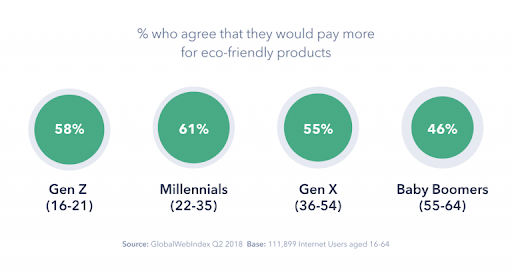
With the Paris Accords, Greenland’s recent record of 40 °F over normal, melting polar caps, and skyrocketing power and technology costs, it’s no wonder so many people are looking for greener pastures.

As more and more consumers are looking for renewable, recyclable, and “green” products, more and more companies are choosing to provide such assurances. Target has its own household cleaning line that is specifically stated to be environmentally friendly and non-toxic. Entire countries have banned plastics, making way for new markets to emerge. Turtle Savers is a British company that solely manufactures metal, reusable straws. They came to be after the UK banned plastic straws due to their beaches amassing a large number of dead sea turtles with plastic straws in their stomachs.
3. Mobile Shopping
“Online shopping is one of the most popular online activities worldwide but the usage varies by region – in 2016, an estimated 19 percent of all retail sales in China occurred via internet but in Japan the share was only 6.7 percent. Desktop PCs are still the most popular device for placing online shopping orders, but mobile devices, especially smartphones, are catching up,” according to Statista (2019).

Approximately 66.72% of the world population (5.1 billion out of 7.7 billion people globally) owns a phone. Interestingly, however, there are currently 8.9 billion phones owned, a full billion more than the world population (Bankmycell, 2019).
4. Smart Speaker Sales
Amazon’s Alexa (and of course Google’s own Home speaker) is still an extremely new product on the market, but with over 24 million Amazon speakers sold (as of December 2017), voice command shopping is a new component to consider. Amazon has pushed the concept of AI in brand new ways, adding AI shopping on your behalf as a brand new reality, and shoppers are loving it. Over 50% of US Alexa owners have ordered products entirely through their smart speakers on multiple occasions (The Talking Shop, 2018).
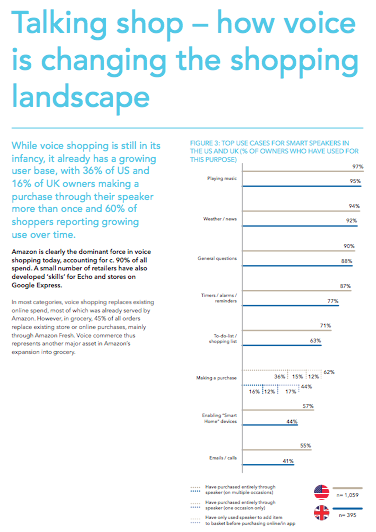
5. The Ever Growing Social Media Effect
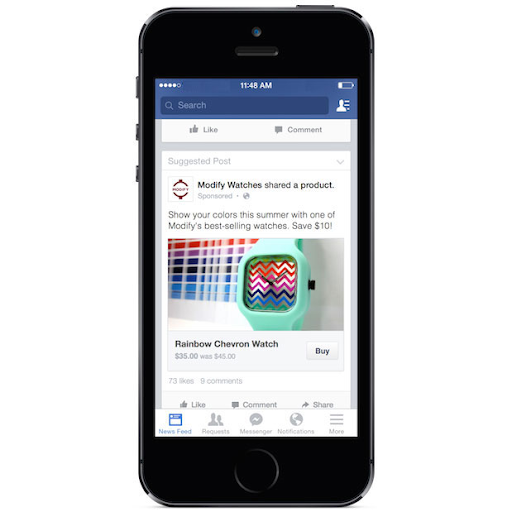
Buy buttons on social media are taking the market by storm. Shopify allows stores to sell through social media pages without having to redirect users from their social media platform at any point in their purchasing process. Facebook, Instagram, and Snapchat have all found ways to incorporate “Buy” buttons, adding e-commerce into social media. Not only are companies using social media as entire marketing strategies, but they are now also using them to sell directly to consumers.
6. Mobile Payments
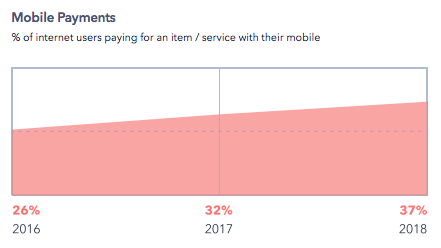
As of 2018, more than 1 in 3 internet users used their phones to pay for goods and services. In countries like Kenya, where there is a lack of credit infrastructure, mobile creditors have prevailed such as m-Pesa (Kenya), NaverPay (S. Korea), and PayPal (Thailand). Denmark, specifically, is leading the way in mobile payments; Danske Bank’s MobilePay became available to anyone with a Danish payment card and phone number, regardless of whether or not they were Danske Bank members, making them leaders in the market and uncontested as of late (Global Web Index, 2018).
7. Artificial Intelligence – AI
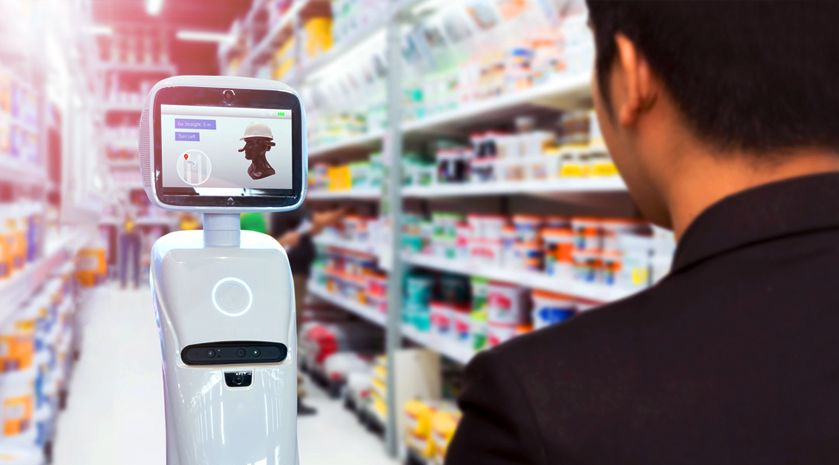
Global retailer spending on artificial intelligence (AI) was at an estimated $2 billion in 2018 and is projected to hit $7.3 billion by 2022. That is a 265% increase in just 4 years, meaning this is and will be a strong point to focus attention on (Juniper Research, 2018).
Retailers are focusing their AI efforts so as to increase personalization for every customer. Imagine walking into a Walmart where restocking shelves and managing inventory was all automated and the hired personnel were there for individual attention.
How many times have you walked through a store looking for an employee specifically to help you find something? Every employee you find is either already helping another customer or is too focused on managing their section’s stock to be able to help you properly. AI would change all of that, and retailers are looking for just that.
Research is also underway for development of AI that can, in real time, adjust their sales, discounts, and offers according to the individual present. The way that Facebook ads and “suggestions” are targeted based on prior search history and amount of time spent looking at individual pages, AI will also target their offers in-store according to each person in front of it. Stores might be a way off from that yet, but the concept isn’t lost on retailers.
8. Augmented Reality – AR
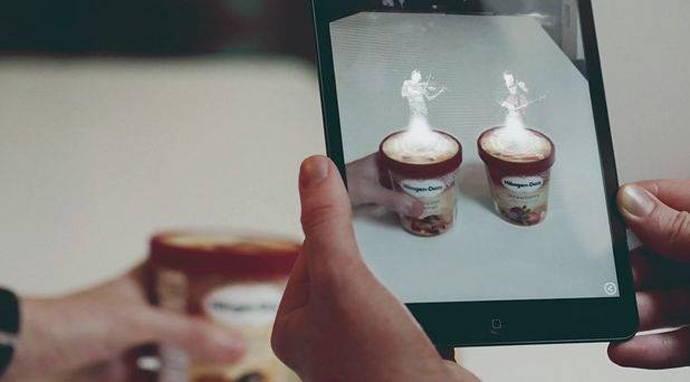
Augmented Reality (AR) has had its time in the limelight with games like Pokemon Go, and within advertisement campaigns from companies like Haagen Dazs.
The future of AR, however, will look a bit different in-store. Instead of offering AR opportunities to consumers, it will be an added source of efficiency for employees behind the scenes. Glasses with AR installed will aide employees with stocks, inventory management, customer service guidance, and so much more. It’s expected that over 120,000 stores internationally will be using AR by 2020 (ABI Research, 2018).
9. Personalized Shopping Experiences
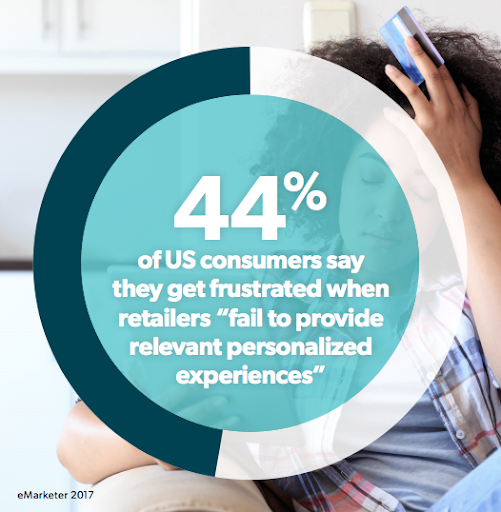
E-marketer reported that 48% of online retailers claim sales increases due to personalization in excess of 10%, and retailers that personalize their entire website claim sales increased more than 15% (bazaarvoice). Now, while it’s well-known that bad customer service will lead to significant customer losses (~50% of consumers will go to competitors over bad experiences), bad personalization is a lesser known evil whereby approximately 40% of consumers claim will lead to the same outcome.
10. Subscriptions, Subscriptions, Subscriptions
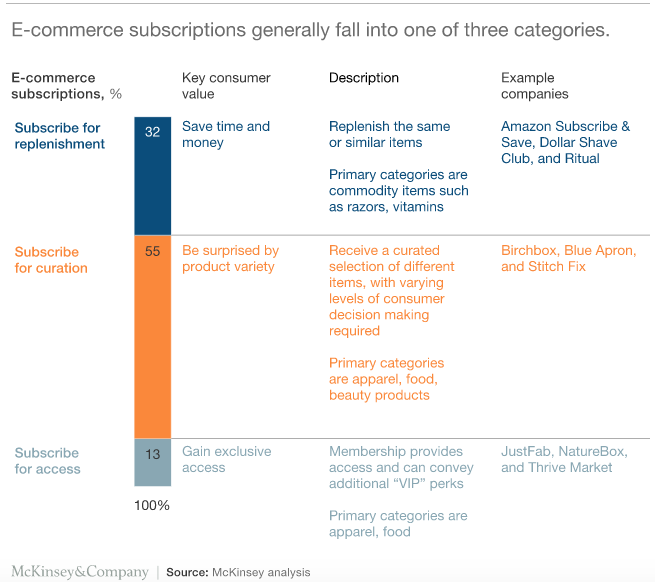
Subscriptions refer to services that are monthly and recurring with regular at-home shipments (e.g., HelloFresh, Play!, Dollar Shave Club). The subscription market has doubled its size annually for 5 years running, according to the McKinsey & Company (2018). This market includes subscription services from common everyday items to cut down on the hours spent each week shopping for basic goods to gaining “VIP” access to premier items (e.g., apparel from JustFab and food from Thrive Market). Subscription boxes are convenient, personalized options that help to save time and money.
Photo Sources:
https://www.statista.com/statistics/379046/worldwide-retail-e-commerce-sales/
https://blog.globalwebindex.com/chart-of-the-week/green-consumerism/
https://blog.globalwebindex.com/chart-of-the-week/green-consumerism/
https://www.statista.com/chart/13139/estimated-worldwide-mobile-e-commerce-sales/
https://www.occstrategy.com/media/1285/the-talking-shop_uk.pdf
https://www.facebook.com/business/news/Discover-and-Buy-Products-on-Facebook-Test
https://www.globalwebindex.com/hubfs/Downloads/Commerce-h2-2018-report.pdf
https://www.applexus.com/ai-in-retail
http://static1.squarespace.com/static/57bc5521d482e9898caccba3/57bc673f03b723ba0eb47de6/57bc674303b723ba0eb47e10/1471964995199/url.jpeg?format=original






